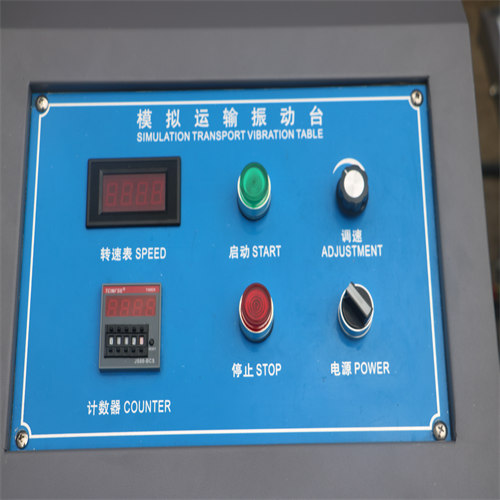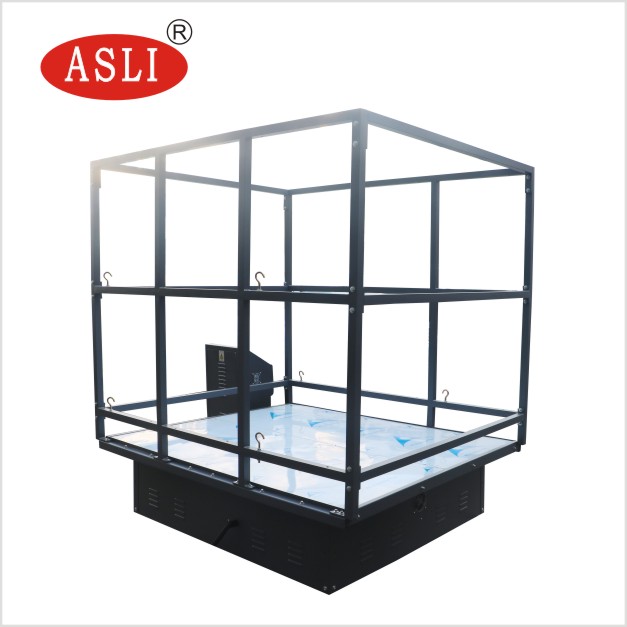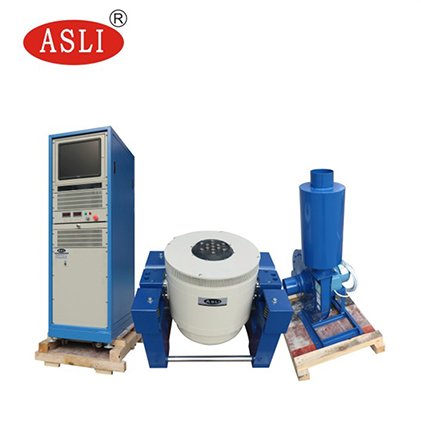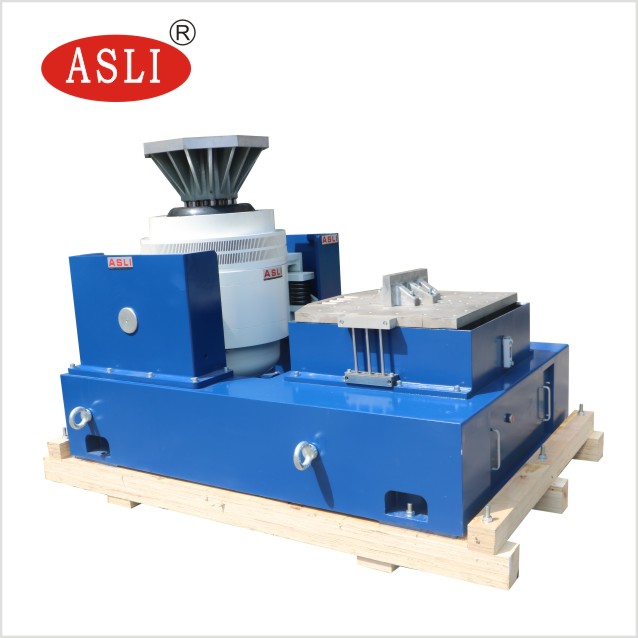In the realm of product development and quality assurance, vibration testing emerges as a pivotal process to ascertain the durability and operational integrity of components and systems under dynamic stress conditions. This testing simulates an array of real-world scenarios, from transportation shocks to environmental vibrations, thus ensuring that products can withstand their intended environments. The implications of such testing are profound, extending not only to product reliability and safety but also to regulatory compliance and customer satisfaction. As industries continue to advance, understanding the intricate details of how vibration testing is conducted and the evolving standards involved becomes critical for manufacturers aiming to maintain competitive edge and operational excellence. What remains to be explored is how recent technological advancements are enhancing the effectiveness of these tests.
Vibration testing is a methodical approach for evaluating a product's performance and durability under mechanical vibrations. This process is essential in ensuring that products are robust enough to handle real-world environments, which could otherwise lead to premature failure. Through rigorous vibration analysis, engineers can simulate various scenarios that a product might encounter during its lifecycle. This helps in identifying potential weaknesses in the design and material composition.
The test procedures involved are designed to assess the structural integrity and performance of the equipment under controlled yet challenging conditions. By doing so, it ensures that every piece of equipment can maintain its functionality and reliability even when subjected to severe vibrations. This form of equipment evaluation is critical in industries where safety and performance are paramount, such as automotive and aerospace.
Incorporating performance assessment into the vibration testing process allows for a comprehensive understanding of how a product will behave under different vibrational forces. This proactive approach not only helps in optimizing the design and materials used but also ensures compliance with international safety and performance standards.
Ultimately, vibration testing guarantees that the products are capable of performing as intended in their operational environment, thereby enhancing consumer trust and product reliability.

Understanding how vibration testing functions, it is important to recognize that it typically employs tools such as a shaker table or a vibration chamber to evaluate electronic components. These devices facilitate the creation of precise vibration profiles that mimic real-world conditions, allowing for comprehensive testing of the component's durability and operational reliability under stress.
Frequency analysis is integral to this process. By adjusting the frequency at which the shaker table operates, engineers can identify how different frequencies impact the component's performance. This is crucial for determining the susceptibility of the device to various vibration intensities encountered during usage.
Accelerometer placement is another key aspect. Strategically positioned accelerometers measure the exact amount of force exerted on different parts of the component at various vibration frequencies and amplitudes. This data is essential for accurate modal analysis, which helps in understanding the vibrational characteristics of the component, including natural frequencies and mode shapes.
Lastly, resonance detection is a critical component of vibration testing. This process involves identifying the specific frequencies at which the component exhibits maximum response or resonance. Such insights are vital for engineers to enhance the design and ensure the component's robustness, thereby preventing potential failures in real-world applications.
To ensure the longevity and operational integrity of electronic components, vibration testing is indispensable. This analytical method, known as vibration analysis, is critical in product development, particularly within sectors like the aerospace industry where the demands on structural integrity are exceptionally high.
By simulating the various stressors these components might face in real-world scenarios, vibration testing plays a pivotal role in failure prevention. The process helps ascertain whether components can endure the dynamic forces they will encounter during operation, thereby ensuring reliability and durability.
This is not just about maintaining performance standards but also about safety. In industries where component failure can lead to catastrophic outcomes, such as in aerospace or medical devices, vibration testing is crucial for validating the robustness of products.
Moreover, adhering to stringent regulatory requirements is another significant aspect necessitating this testing. It facilitates early detection of potential defects, thereby reducing the risk of costly recalls and enhancing consumer trust.
Ultimately, vibration testing is not merely a regulatory formality but a critical component of a comprehensive quality assurance strategy that ensures products are both durable and safe.



Several methods of vibration testing, including sine, random, shock, and composite tests, are utilized to evaluate the resilience of products under dynamic conditions.
Sine vibration testing employs a single-frequency waveform consistently, which is vital in frequency analysis to identify structural resonances and ensure accelerometer calibration. This method simplifies the data interpretation process by focusing on specific frequencies.
Random vibration testing, in contrast, uses a spectrum of frequencies simultaneously to more closely simulate real-world environments. This approach is crucial for comprehensive resonance detection, allowing for a more accurate assessment of a product's behavior under varied operational conditions. The complexity of the vibration spectrum requires precise test setup optimization to achieve reliable results.
Shock vibration testing involves sudden and severe impacts, testing the product's ability to withstand extreme forces. The data interpretation from these tests is essential for critical applications where mechanical shocks are a significant concern.
Lastly, composite and combined environmental testing integrate vibration tests with other environmental factors like temperature and humidity, requiring meticulous setup and calibration to effectively simulate operational environments. This method enhances the reliability of the test outcomes through detailed frequency analysis and resonance detection.
Vibration testing is critical across various sectors, including electronic components, industrial machinery, transportation systems, and anti-earthquake measures.
In the automotive industry, this testing ensures that vehicles maintain structural integrity and functionality under various stress conditions, thus enhancing safety and reliability. Aerospace applications benefit significantly as well, where vibration testing is indispensable for assessing the durability and performance of aircraft components subjected to intense dynamic forces during takeoff, flight, and landing.
Consumer electronics are subjected to vibration tests to verify their robustness and operational reliability in everyday use scenarios, from mobile phones to household appliances. Such testing helps in predicting product lifespan and improving user satisfaction by ensuring devices can withstand accidental drops or transportation stresses.
In the realm of military equipment, vibration testing is pivotal for ensuring that systems can operate under extreme conditions without failure, vital for mission success and personnel safety. This includes everything from handheld devices to large vehicles and weaponry.
Establishing uniform criteria for evaluating the durability and safety of equipment, various standards have been set for vibration testing in different industries. These standards provide a rigorous framework that ensures products are capable of withstanding real-world conditions, thereby enhancing product reliability and consumer safety.
Advanced vibration testing equipment significantly enhances the reliability and longevity of products by ensuring they are designed and built to withstand their operational environments. These tools represent a critical industry advancement, enabling manufacturers to tailor their designs precisely to real-world conditions. This precision not only boosts the overall reliability of products but also fosters significant cost savings by eliminating the need for over-designed components, which are often more expensive and heavier.
Moreover, the integration of advanced vibration testing into manufacturing processes aids in adhering to stringent quality standards. This compliance is essential in industries where safety and performance are closely monitored, such as automotive and aerospace. Regular employment of such equipment facilitates predictive maintenance, a practice that preempts failures and minimizes downtime by addressing potential issues before they escalate into costly repairs.
Utilizing state-of-the-art vibration testing tools allows companies to stay competitive by ensuring that their products are both durable and efficient, reflecting well on brand reputation and customer satisfaction. This strategic application of advanced technology not only secures industrial leadership but also protects investment and drives innovation in product development and maintenance strategies.
Selecting the appropriate vibration testing equipment requires a thorough understanding of the specific requirements and technical specifications of your project. Equipment selection must align with the project's demands to ensure effective and accurate results. Every component, from shakers to controllers, plays a vital role in achieving the desired outcomes.
Consider the following factors when choosing your equipment:
Vibration testing, through predictive analysis and accelerated aging techniques, can estimate a product's lifespan by simulating real-world conditions to assess reliability, failure prediction, and durability, thus providing critical control over product lifecycle management.
Alternative methods to vibration testing include simulation software for predictive modeling, accelerometer technology for precise measurements, modal analysis for dynamic behavior, and assessments of environmental factors to ensure structural integrity under operational conditions.
Skipping vibration tests can lead to product failure, safety hazards, and performance issues, potentially resulting in customer dissatisfaction and legal liabilities. Ensuring control over these risks is crucial for maintaining product integrity and user trust.
Vibration testing should be conducted at intervals determined by industry standards, which consider frequency thresholds. Regular testing ensures control over equipment performance and optimizes the benefits of maintaining operational integrity and safety.
Vibration testing is generally safe, but material compatibility, safety precautions, and impact assessment must be meticulously considered. Environmental factors and failure analysis are crucial to prevent damage to sensitive or inherently fragile materials.
In conclusion, vibration testing is an essential process that ensures product durability and reliability across various industries. By adhering to rigorous standards and employing advanced equipment, organizations can greatly minimize failure risks and enhance safety.
The statistic that approximately 50% of industrial failures are linked to mechanical fatigue, predominantly caused by untested vibrations, underscores the critical need for implementing comprehensive vibration testing protocols to safeguard both functionality and longevity of products.
Founded in 1988, ASLI (China) Test Equipment Co., Ltd. produces high-quality inspection instruments and testing equipment, including temperature and humidity chambers, aging testers, and vibration testers. Certified to international standards, ASLI serves research, quality inspection, and educational sectors worldwide, renowned for precision, reliability, and exceptional customer service.


[…] Related Article: Why Vibration Test Is Required: Understanding Its Importance and Applications […]